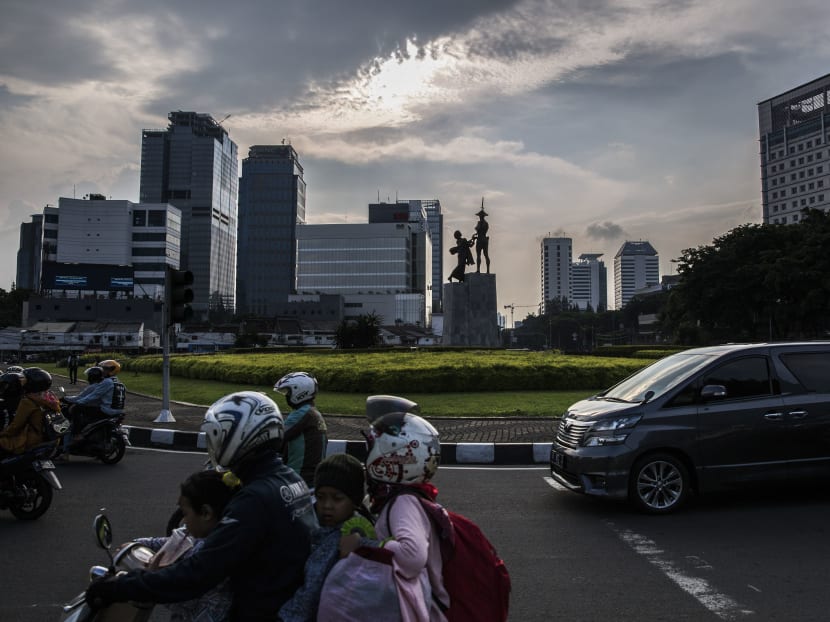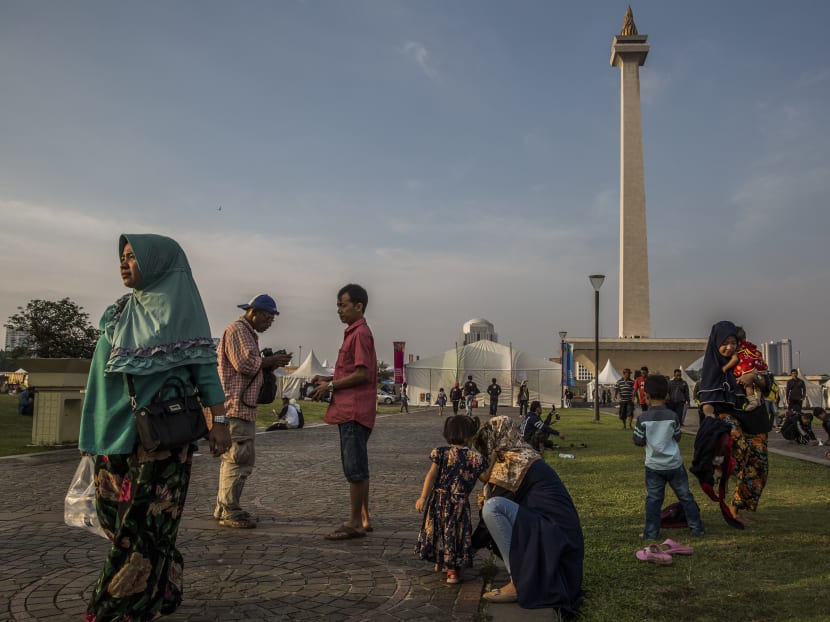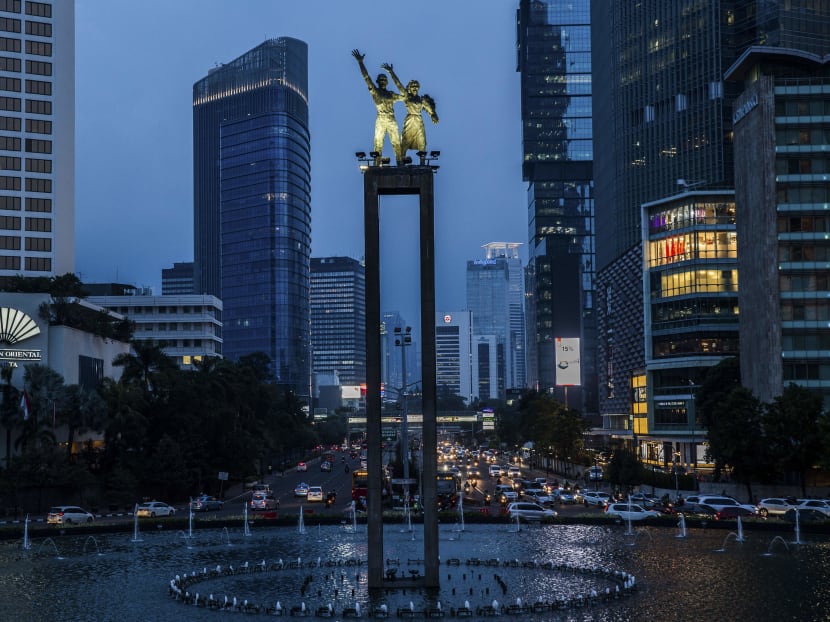Across Indonesia’s capital, a legacy of Soviet-inspired design
JAKARTA — When hard-line Islamists marched on Indonesia’s Parliament to protest what they consider the growing influence of communism, they could hardly have picked a more ironic place to gather — near the 80,000-seat Gelora Bung Karno Stadium.



JAKARTA — When hard-line Islamists marched on Indonesia’s Parliament to protest what they consider the growing influence of communism, they could hardly have picked a more ironic place to gather — near the 80,000-seat Gelora Bung Karno Stadium.
The stadium, opened in 1962, was built with Soviet-raised money.
Jakarta’s National Monument — where hundreds of thousands of Islamic hardliners held rallies in 2016, demanding that the capital’s Christian governor be lynched for blasphemy — was inspired by Soviet architecture.
So were the Welcome Monument, a statue surrounded by a large water fountain on Jakarta’s largest roundabout, and the Heroes Statue, of a young peasant being offered food by his mother as he prepares to go to war — a symbol of Indonesia’s struggle for independence from the Dutch.
All of these structures are examples of the Communist-influenced monuments sprinkled throughout this city, part of the legacy of Indonesia’s founding president, Sukarno, who served from 1945 to 1967 and led the country’s move for independence.
Sukarno, a former architect who put in place Socialist policies, was attracted to Soviet-style monuments.
His vision of the Indonesian capital in the 1950s and 1960s included wide boulevards and huge statues to the greatness of the new nation.
“He had this obsession with ‘the great city,’ ” said Mr Bambang Eryudhawan, an architect based in Jakarta, Indonesia’s capital.
Mr Bambang noted that Sukarno was inspired by his travels around the world, where he saw nationalistic architecture throughout India, China, Eastern and Western Europe, and the United States.
“He wanted to lift the spirit of the nation,” he said.
Jakarta’s Communist-style monuments stand out, especially in a city with a presidential palace that is an example of Dutch colonial architecture, and whose buildings include crumbling Dutch- and Chinese-style structures near high-rise office towers, with an unregulated sprawl of urban slums.
The 433-foot National Monument stands in the middle of a 185-acre square in central Jakarta.
With socialist-looking reliefs at its base telling the story of Indonesia’s rebellion against Dutch rule, it is perhaps the most prominent example of Communist-influenced design in South-east Asia.
The plaza surrounding it is Merdeka, or Freedom, Square, which is modeled on Red Square in Moscow. To the north lies the presidential palace; government buildings and military barracks lie on the square’s east, west and south ends.
To the south-east is the Heroes Statue, which was designed and built in the Soviet Union by the Socialist Realist sculptor Matvey Manizer and his son Ossip. The artists visited Indonesia before creating their work.
The piece was shipped to Indonesia and inaugurated in 1963, a time of growing importance for the Indonesian Communist Party, which was banned by the government in 1966 and remains so today.
About 1.6km away, down a wide boulevard, the Welcome Monument features a woman and man giving a welcoming gesture. It evokes the style of the Russian sculptor Vera Mukhina.
Further south on the boulevard, close to the Soviet-financed soccer stadium, is the Youth Advancement Monument. Unveiled in 1971 and meant to encourage young people to help build the new nation, it depicts a muscular young man shouting and holding aloft a plate of flames.
Expatriates in Jakarta call the 82-foot statue “Pizza Man,” joking that the figure appears to be holding a pizza.
Also in South Jakarta is the Dirgantara Statue, known as Patung Pancoran after the surrounding district. The piece portrays a traditional Indonesian figure pointing toward the location of the international airport at that time to celebrate Indonesia’s growing aviation sector in the 1960s.
Mr Eko Harmanto, an Indonesian businessman and local historian, said the country’s radical Islamic groups did not appreciate the history underlying the capital’s architecture.
“Ah, they don’t know much,” he said. “A lot of monuments, buildings and infrastructure were financed by the Russians, and everyone knows this, or should know it.”
Analysts say the hardline Islamists’ protests against Communism are really aimed at President Joko Widodo, who has been compelled to deny claims by anonymous social media users that his ancestors were Communist sympathisers and members of the outlawed Indonesian Communist Party.
The Islamic Defenders Front, the most vocal Islamic group, has called for the Heroes Statue to be torn down, echoing calls in the US for Confederate statues to be dismantled.
“It is a trace of the Indonesian Communist Party and a symbol of pride for those who managed to arm peasants to rebel against the state,” said Mr Novel Chaidir Hasan Bamukmin, a senior member of the Islamic group, which is critical of Mr. Joko’s government.
The demand has not gained traction.
The Socialist-inspired monuments remain a fixture, despite the anti-Communist stances of the Indonesian Armed Forces and the Islamists — although in September the army raided a Jakarta restaurant that had displayed a flag with a hammer and sickle.
“I don’t think the younger generation is going to buy this,” said Mr Bambang, the local historian.
The landmarks celebrate the country’s shared past rather than any particular ideology, he said, noting that Indonesia’s most famous monument is Borobudur, the ninth-century Buddhist temple near the city of Yogyakarta.
“It’s not about Buddhism,” he said. “It’s our heritage.” THE NEW YORK TIMES






